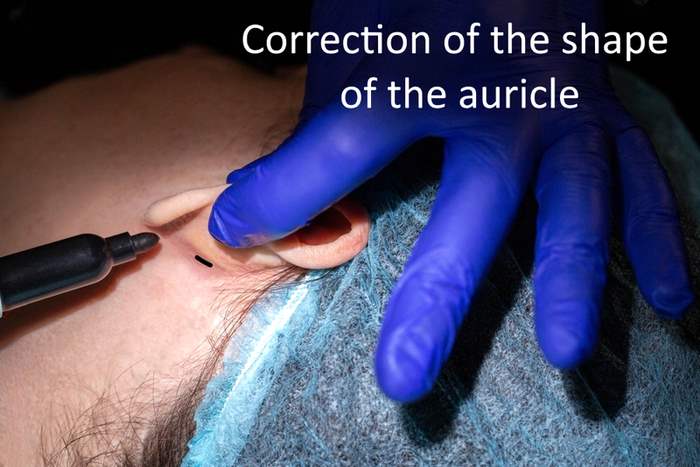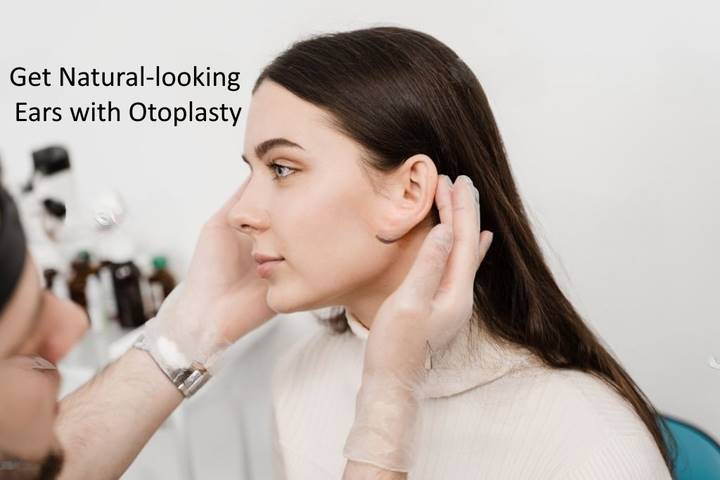The term otoplasty comes from the Greek word othos, meaning ear.
Otoplasty is divided into:
1. Cosmetic (aesthetic);
2. Reconstructive.
The first solves the aesthetic problems of the auricle – most often eliminates protruding ears (protruding ears). The second solves a more complex problem – the creation of a completely or partially missing shell (congenital anomaly or acquired defect).
COSMETIC (AESTHETIC) OTOPLASTY
Protruding ears are a fairly noticeable cosmetic defect, especially in childhood. We had to operate on self-contained losers who, after the operation, became brilliant students because they ceased to be the object of constant ridicule of their classmates.
What are the reasons for this cosmetic defect?
This deformity is congenital. The ear, or more precisely, the auricle, is made up of thin, elastic cartilage covered with skin.
Normally, there is a cartilaginous fold on the ear, which is called the antihelix, it limits the small depression where the ear canal goes. This depression is called the concha (fossa) of the auricle.
The absence of an antihelix or a too-large angle between the posterior surface of the auricle and the behind-the-ear region of the skull (more than 300) creates the appearance of an excessive separation of the ear from the skull. This creates the effect of a protruding ear.
When is the best time to have surgery?
Ear correction can be done at any age, starting at age 6, when the ear is the size and shape of an adult. Most often, the child himself insists on the operation, he does not want to be the object of ridicule of his comrades. To protect the child’s psyche from stress, we recommend that the operation be performed before the first school trip. But in general, there is no age limit. It is only worth noting that children tolerate it more easily.
What is the best time of the year for the operation?
The time of year does not matter, but wearing a pressure bandage that is applied after surgery is easier to tolerate in the cold season.
What anesthesia is used for otoplasty?
Local anesthesia in combination with a tranquilizer is usually sufficient. If the patient insists, we apply general anesthesia.
How is the operation carried out?
Usually, the task of the surgeon is to re-form the antihelix of the auricle and remove the cartilaginous excess of the fossa, which prevents the shell from approaching the skull, i.e. decrease the angle mentioned earlier. The antihelix is formed using small sutures on the cartilage, which is pre-thinned to give elasticity.
The incision is placed behind the ear in a crease so that the scar is not visible. After working on the cartilage, the ear is loosely attached to the behind the ear area. The skin wound is sutured.
What are the features of the postoperative and rehabilitation period?
We can let the adult patient go home 2-3 hours after the operation. We prefer to discharge the child the next morning after the operation. The first dressing is carried out on the 3rd day after the operation. Bandage in the form of a turban lasts 8-10 days. Along with it, the sutures behind the auricle are also removed.
That is why the best time for this operation for children is the holidays.
No baths should be taken for two weeks after the operation. After removing the bandage, it is necessary to put on an elastic bandage or a tennis bandage at night for a month in such a way that the operated ears do not wrap up during sleep.
We believe that even with unilateral protruding ears, it is necessary to correct both auricles, this helps to avoid the reverse process when the operated ear is pressed against the skull more strongly.





